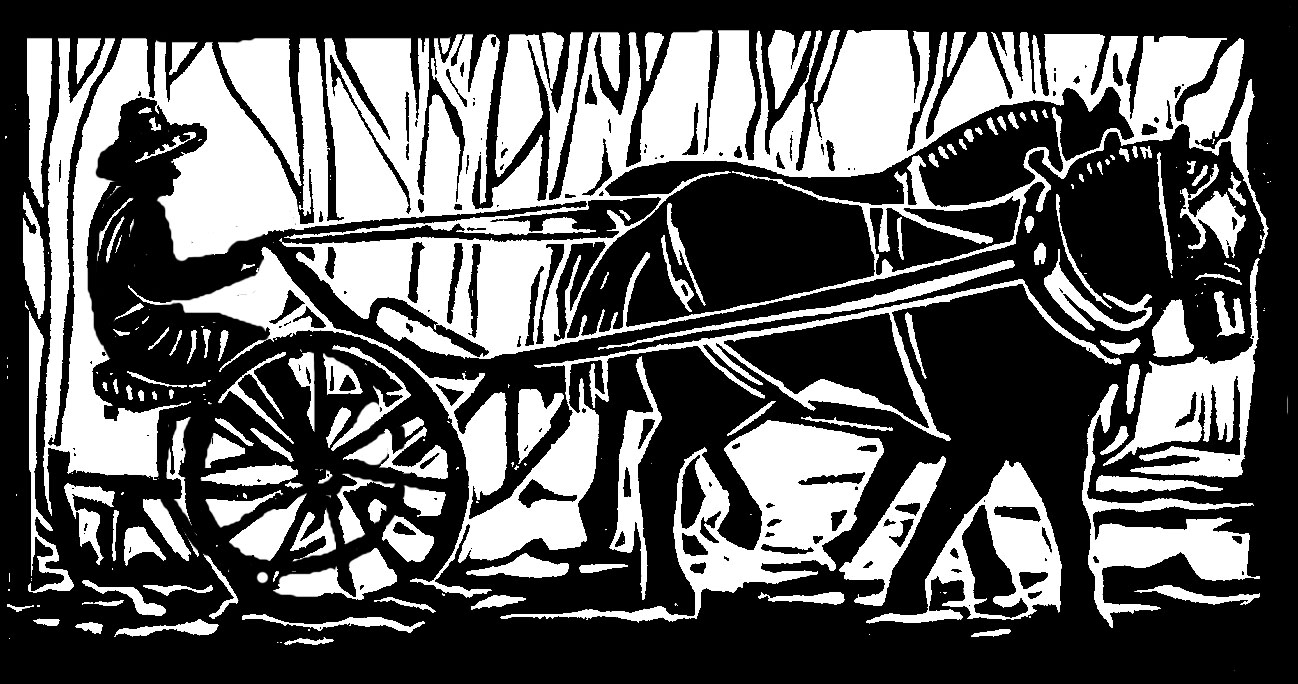Early winter is an excellent time for reflection on a New England vegetable farm. The garden season is still fresh in a farmer's mind, and also just far enough in the past that a farmer can begin to see the humor in it.
This season, for example, we sowed three two-hundred foot beds of fall carrots, with two rows to a bed, as we normally do, to feed our nearly 100 CSA members for two or three months. We always “mark” the carrot rows by mixing in radish seed, as radishes are such fast germinators that we can weed the rows before the carrots even come up. Sometimes we harvest the radishes; sometimes we just weed them out.
But this year we didn't have any radish seed hanging around, so we used purple-top turnip seed instead. Lo and behold, the darned carrots didn't germinate, but the turnips did. Instead of lots of carrots, which most everybody loves, we had mountains of fall turnips, which most everybody . . . doesn't love.
We would have been happy with 250 turnips total for the CSA garden, but instead we found ourselves with over 1200 turnips. Luckily, we do have some diehard turnip fans that were delighted with the crop, but we must admit that the first purple-top turnip does not usually bring about the same elation, as, say, the first ripe tomato of the season.
Even the farmers have been a little daunted by the sheer number and size of the turnips this fall. We have been searching out turnip recipes: mashed, roasted, and the favorite-lots-of-heavy-cream-and-onions-plus-a-few-token-turnips casserole. It is our New England duty, we used to say, to eat our one purple-top turnip a year. But now we are leaning to love our many turnips. Or at least feel some fondness, and a good deal of familiarity, with our many turnips.
We did find a wonderful use for one of our biggest, human head-sized turnips. Since we don't grow pumpkins, as one farmer here has a strong philosophical stance against growing decorations and not food, we found that a big ol' turnip was almost as nice as a big ol' pumpkin. We couldn't carve it, of course, because then we would have decoration, and not food, but we made purple construction paper eyes, to match its purple top, and, the turnip had its own naturally-occurring jack-o-lanternish mouth.
Perfect!
And perfect for the 2014 season, too, because for years we've been waiting for Halloween to fall on one of our CSA pick-up days. At last, to our great glee, it happened! On Halloween, we featured our turnip jack-o-lantern, along with a fierce fanged green pepper. We put rocks in the taters, and we switched all our vegetable labels around. Green peppers were cabbage, tomatoes were Swiss chard, rutabagas were leeks. Oh, we are very very funny farmers.
We had one last great trick for Halloween. On the harvest chalkboard, we list the vegetables ready for our CSA members for the day: Potatoes - Two lbs, Lettuce - One head, Brussels Sprouts - One stalk, Green Pepper- One, and the like.
On Halloween we wrote “Purple-Top Turnips – Thirty.” Oh ha ha ha! We farmers were rolling around on the ground with laughter, anticipating our CSA members' reactions. Then we added in a little asterisk, referring to a note below: “Trick or treat -- you only get three turnips!” (Note that we didn't write: “You only have to take three turnips.” Instead it was the enticing: “You only get three turnips!” Subliminal message: You lucky people you!)
So very funny, so very tricky. Plus the thought of loading thirty purple-top turnips into a bag and hauling them home was so enervating that people were relieved, delighted, jubilant, yes, celebratory about taking only three turnips home!
And, even funnier, the next few weeks we gave out six purple top turnips per person, along with some “specialty turnips.” For some reason the turnip spirits gave us the idea that this was the perfect year to trial black, red, and yellow turnips too.
But the turnip tricks didn't end there. We wrote it on the harvest chalkboard: “Specialty Turnips - Two.” But guess what? The black, red, and yellow turnips were not turnips at all. They were really radishes!
Oh, golly. You'd think after close to twenty years in as vegetable farmers, we might know a turnip from a radish. It seems like the mischievous turnip and the mischievous radish spirits were having a mighty fine time this year.
And the farmers were too, for the most part, which is a fine thing in itself, and most encouraging in a time of farm reflection.
Originally published in the Monadnock Shopper News, Nov 26 – Dec 2, 2014



